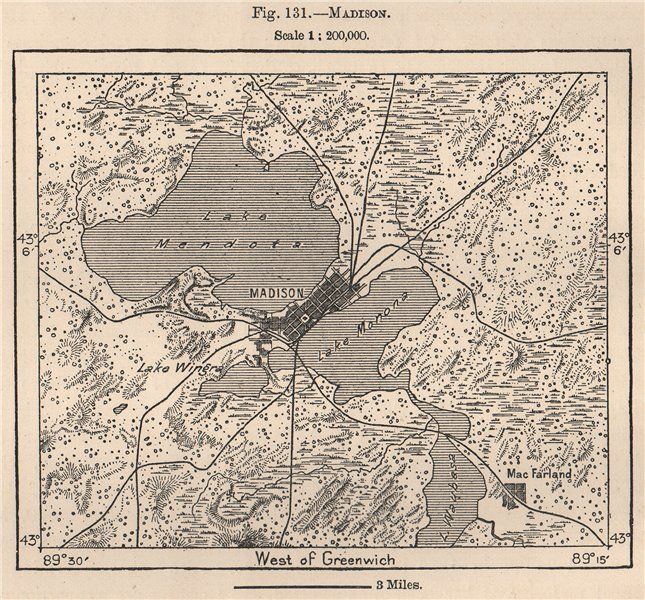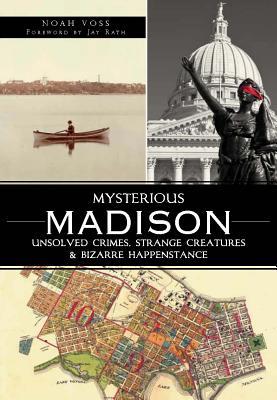Authored by Noah Voss
The History Press 2011
 Caption: Historical map of Madison, Wisconsin circa 1800s. |
Any new city, village, or township is riddled
with firsts. The intriguing part of Madison's first is how many rest
squarely with one family. In 1837, Roseline Peck, along with her
husband, established the first inn for Madison. Mrs. Peck described the
evening is in generous detail from her writings of the time. It was
completed with the financial help of James Doty no sooner than the
afternoon of the city's first 4th of July celebration. Their inn was to
draw a crowd of reportedly hundreds to an area that wouldn't be
incorporated as a village for another ten years. Locals from the
Ho-Chunk Nation also attended the festivities. The evening included
beef, veal, feather beds, and a basket of champagne. Roseline embodied
the strong, capable Wisconsin woman. Even with her husband purportedly
"incapacitated" and herself seven months pregnant, everything is said to
have gone off without a hitch. Folks singing into the evening and
general joy abounded. Roseline would go on to give Madison another
significant first. Firstborn, Wisconsiana Victoria Peck came about soon
after.
Independence Day celebrations would not always
go as smoothly as the first. In 1871 John Betz was manning a cannon used
at the Capitol lawn celebration. When the cannon went off prematurely,
John was disfigured and mortally wounded. He survived the incident long
enough to be taken to his home at 1036 University Avenue. He passed the
next day.
Again in 1889, William Melvin was disfigured
and later died from a cannon blast. He was also working on the 4th of
July Celebrations on the Capitol lawn. Mysteriously connecting the two
is the address they both called home. Though almost twenty years apart,
and no known relation between the two, they were both living at the same
1036 University Avenue at the time of their forceful demise.
Amazon Listing for Mysterious Madison
Good Reads Listing for Mysterious Madison
